13 Best Climbing Plants for Your Backyard Pergolas, Fences, and Trellises
Take your garden to new heights with these climbing plants and flowering vines.
While pergolas, fences, and trellises all make wonderful additions to a landscape, they look even better when adorned with climbing plants and flowering vines. Not only do vines add beauty to your landscape, but they can add additional privacy where needed, and even work well as ground cover, says Edward Lyon, director of Reiman Gardens.
But choosing the correct variety is key, since not every vertical-growing plant works across every structure—some are too strong and will pull your fence apart, while others are too heavy for a stand-alone trellis.
Gardening experts share their favorite climbing and flowering vines, along with tips on growing and caring for them.
Meet Our Expert
Edward Lyon, director of Reiman Gardens with Iowa State University in Ames, IA is the author of Growing the Midwest Garden. Lyon has been hooked on gardening since he grew his first nasturtiums at age 13 and has incorporated a variety of vining plants into his beautiful Midwestern landscape.
Justin Hancock, horticulturist with Costa Farms.
Shannon McEnerney, horticulture and landscape expert with Midwest Groundcovers and the Perennial Plant Association.
Related: How to Grow Gorgeous Climbing Hydrangeas, According to Martha
Black-Eyed Susan Vine
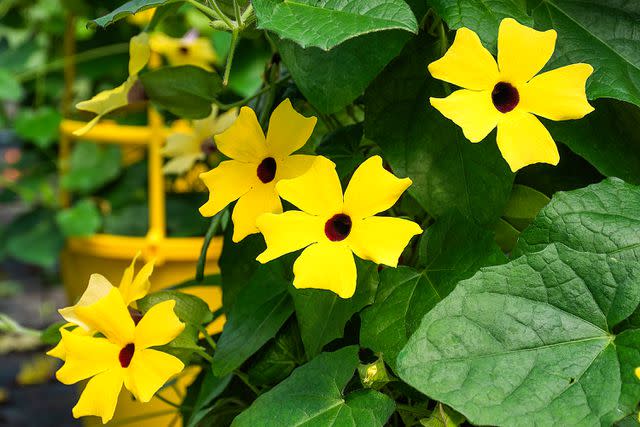
liveslow / GETTY IMAGES
Fast growing annual Thunbergia alata is perennial in Zones 10 to 11, but works well as an annual farther north. "You can buy these annual vines very reasonably, and within a month, they're already flowering," Lyon says. "And because they are tropical, they grow very, very quickly." He likes them in hanging pots, where they reach all the way to the ground, creating gorgeous gazebo curtains. Adding to their appeal, they come in a range of colors, including whites, yellows, oranges, and pinks.
Zones: 10 to 11 (grown as an annual elsewhere)
Size: 3 to 8 feet tall x 3 to 6 feet wide
Growing conditions: full sun to part shade; rich, well-draining soil
Growing location: hanging pots, arbors, trellises
Boston Ivy 'Fenway Park'
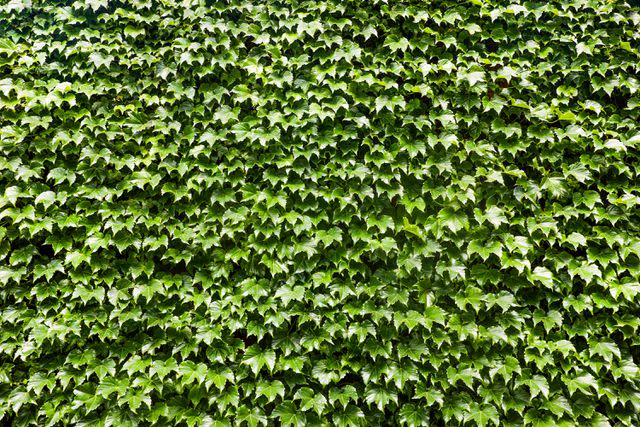
DigiPub / GETTY IMAGES
Named for the famous baseball stadium in the city where it was discovered, Boston Ivy 'Fenway Park' (Parthenocissus tricuspidata) grows on outfield walls in its namesake ballpark, as well as Chicago’s Wrigley Field and the brick buildings throughout the colleges of the Ivy League. Because it has adhesive grips, 'Fenway Park' will adhere to brick without entering into the mortar. And while it will need trimming to stay in bounds, it’s much easier to manage than English ivy, Lyon says. In fall, it turns gorgeous shades of red, orange, and gold, especially if it’s getting regular sun.
Zones: 4 to 9 (plant on east or north walls in zones 8 and 9)
Size: 30 to 50 feet tall x 5 to 10 feet wide
Growing conditions: full sun to partial shade, but will tolerate full shade; prefers moist, loamy soil but will grow in a wide range of soils
Growing location: Train this woody vine up a brick wall, across a fence, over a pergola, or on a sturdy trellis
Related: 11 Low-Maintenance Perennial Plants for Busy Gardeners
Bougainvillea
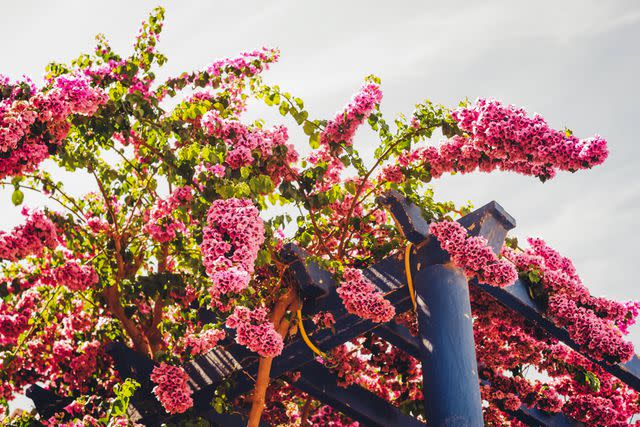
AnnaNahabed / GETTY IMAGES
Tough bougainvillea produces colorful bracts (flower-like foliar structures) in red, pink, purple, and yellow. "This evergreen vine practically explodes into bloom with colorful paper-like bracts in hot, showy colors," says Justin Hancock, a horticulturist with Costa Farms. "It's also fantastically heat- and drought-tolerant."
Zones: 9 to 11
Size: 15 to 40 feet tall x 15 to 40 feet wide
Growing conditions: full sun; acidic, well-draining soils
Growing location: A pergola in a sunny location will give this beauty the all-day light it loves
Carrion Flower
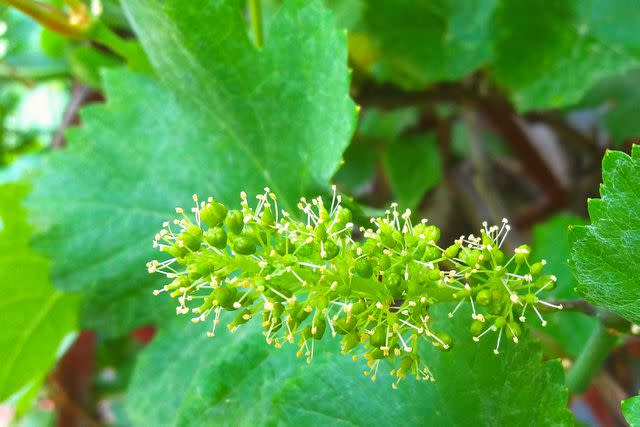
mikroman6 / GETTY IMAGES
A non-woody native vine, Smilax herbacea is not for everyone because it produces very smelly flowers. But if you have a wooded landscape away from the house and want to support pollinators and birds, give it another look. "Songbirds love the fruit," Lyon says, and its pretty blue-black berries are a good food source for grouse and turkeys (plant both male and female vines to facilitate fruit production). Its flowers also support bees, butterflies, and carrion flies, a beneficial insect.
Zones: 4 to 8
Size: 3 to 10 feet tall; leaves are 2 to 3 inches wide
Growing conditions: full sun to shade; almost any moist soil
Growing location: Plant along a fence or allow it to grow up tree trunks in a wooded area
Related: 15 Pollinator Plants That Will Attract Birds, Bees, and Butterflies to Your Garden
Clematis
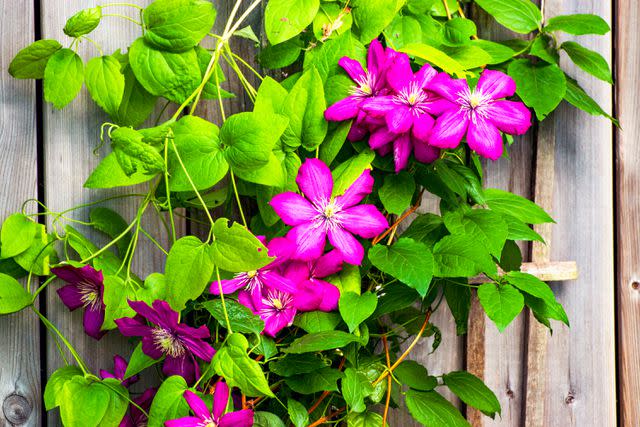
Karen Hogan / GETTY IMAGES
Chances are, there’s a clematis that will love where you live. "As long as it has sunny tops and you can keep the roots moist, it will grow almost anywhere in the country," Lyon says. Also good to know: By combining different varieties of this flowering vine (they’re classified into three divisions, by blooming times and characteristics), you can have blooms all season long.
Zones: 3 to 9
Size: 3 to 20 feet tall, depending on the variety
Growing conditions: full sun; loamy, well-draining soil
Growing location: Works well on any structure, including arbors, trellises, fences, and pergolas
Common Grape
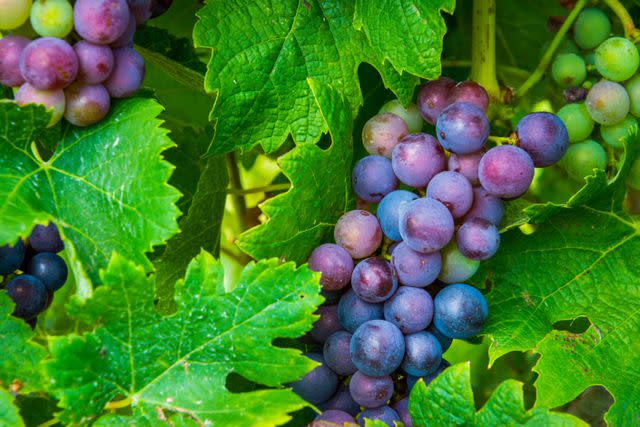
Kloeg008 / GETTY IMAGES
A favorite in English gardens, twining Vitis vinifera 'Purpurea' has beautiful, deeply lobed leaves that are green in spring and evolve to deep burgundy in summer and crimson in fall. Its tasty fruit is a deep concord purple blue, "which goes beautifully with that purple foliage," Lyon says. And while people assume grape vines need tending to produce fruit, "this one doesn’t need to be pruned at all. You can just let it grow and grow." Consider planting one along a porch to create an edible curtain.
Zones: 4 to 8
Size: 15 to 20 feet tall x 6 to 10 feet wide
Growing conditions: full sun to part shade with good air circulation; any well-draining soil
Growing location: Plant along a split-rail fence or any sturdy arbor, pergola, or trellis
Related: 13 Purple Plants to Grow for Bold Color
English (David Austin) Rose 'Carding Mill'
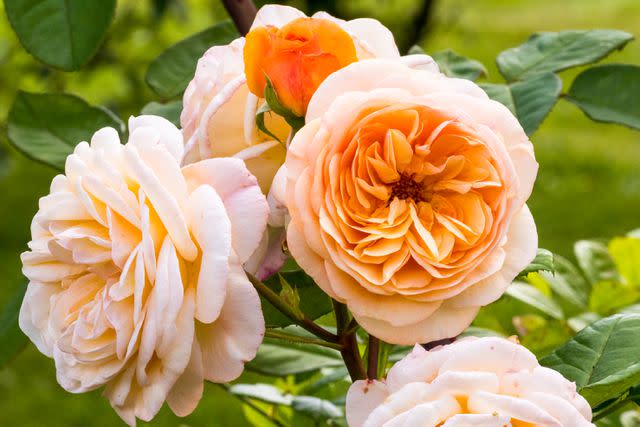
David O'Brien / GETTY IMAGES
A strong performer with spicy, myrrh-scented flowers, Carding Mill is an English shrub rose that won’t grow tall enough to scale an arbor, but will sprawl beautifully along a fence, says Shannon McEnerney with Midwest Groundcovers. Double, peachy orange blooms mature to a soft apricot-pink and begin in late May or early June, reblooming in late summer and hanging in there through fall, even in colder zones.
Zones: 5 to 11
Size: 4 feet tall x 3 1/2 feet wide
Growing conditions: full sun; all soil types
Growing location: Plant along a fence or as a visual anchor along the back of a garden
Related: How to Grow and Care for All the Roses in Your Garden
Honeysuckle 'Kintzley's Ghost'
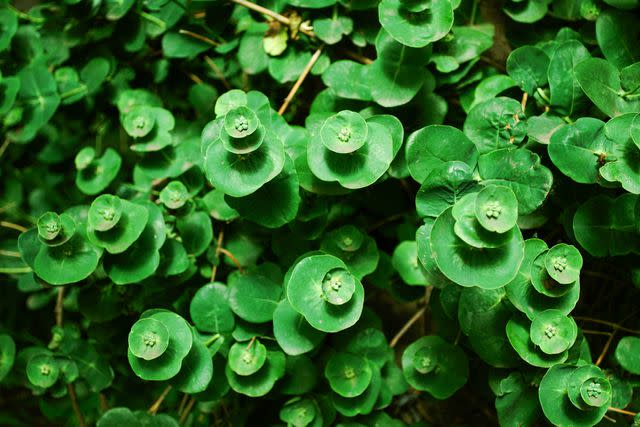
Julia Bogdan / GETTY IMAGES
Native to North America, Lonicera reticulata looks like it dropped from another planet, with silver dollar-sized bracts in a ghostly, gorgeous silver-blue. Lyon trained one onto a small tree that that was no longer living in his yard with stunning results. "We’re always so quick to cut things like that down, but you can still use them in a different way," he says. Unlike some honeysuckles, Kintzley's Ghost doesn’t send out shoots underground, so it doesn’t get out of hand and is easy to keep pruned.
Zones: 4 to 8
Size: 8 to 12 feet tall x 3 to 5 feet wide
Growing conditions: full sun to part shade; rich, well-draining soil
Growing location: Plant this woody vine near a sturdy arbor, pergola, or trellis
Mandevilla
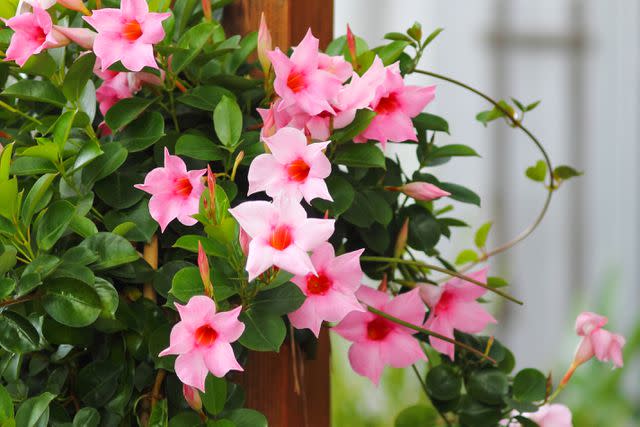
Keikona / GETTY IMAGES
This flowering vine blooms nonstop from late spring to fall, producing big, trumpet-shaped flowers in pink, white, and red. "The flowers are attractive to pollinators, like bees and hummingbirds, so you're providing habitat as well as beauty," Hancock says. A tropical plant, it won't survive winter in areas that see a frost, making it a good choice for planters and spaces where you don't have room for a large perennial vine.
Zones: 5 to 11
Size: 3 to 8 feet tall x up to 20 feet wide
Growing conditions: sun; rich, sandy, well-draining soil
Growing location: Works well on a trellis
Related: How to Grow and Care for a Mandevilla Plant
Passionflower
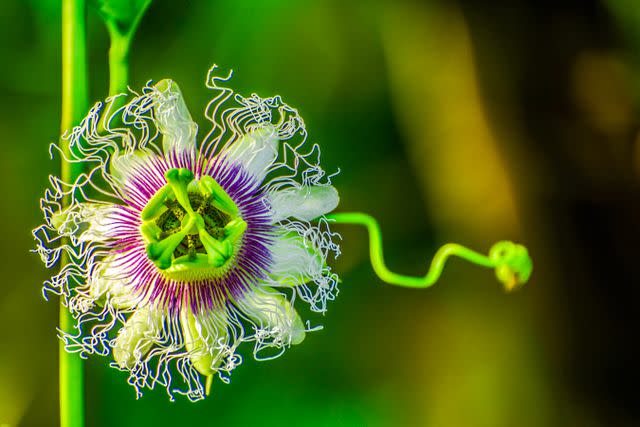
Kriswanto Ginting / GETTY IMAGES
Exotic Passiflora spp. is easy to care for and grows quickly, making it popular as an annual in northern climates. "There's a ton of choices, so you can get flowers in just about every color—and many are fragrant," Hancock says. "As a bonus, some varieties produce edible fruit."
Zones: 6 to 10
Size: 10 to 30 feet tall x 3 to 6 feet wide
Growing conditions: sun (with afternoon shade in very hot regions); rich, well-draining soil
Growing location: Can be grown on a trellis or fence with protection from strong winds
Variegated Kiwi Vine
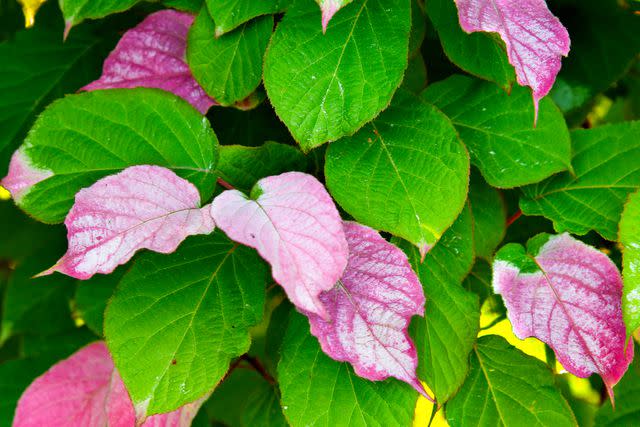
Zhanna Hapanovich / GETTY IMAGES
A mid-range-sized vine with beautiful green, pink, and white variegation, Actinidia kolomikta works well on a variety of structures. True to its common name, it’s a kiwi that will produce edible fruit if you have both a female and a male plant. "The fruit is smaller and rounder than the tropical kiwis we'd normally eat—and it’s maybe a little more floral in its taste, but they're still fairly tasty," Lyon says. If you don’t want fruit, look for a male plant, which will have more of the variegation that gives this plant its showy appearance, he says. Both male and female vines are also pollinators.
Zones: 4 to 8
Size: 15 to 20 feet tall x 6 to 10 feet wide
Growing conditions: full sun to part shade; rich, well-draining soil
Growing location: Can be grown on any reasonably strong arbor, pergola, or trellis
Virginia Creeper 'Star Sparkler'

Native to the Eastern United States, easy-care Parthenocissus quinquefolia adapts to sun or shade. Its flowers aren’t showy, but beautiful variegated foliage more than makes up for that. "Everybody's going to notice it in your yard," says Lyon, who grows one that "gets all kind of comments" on an arbor over a gate in his landscape. Adhesive grips also allow 'Star Sparkler' to adhere to brick without entering into the mortar.
Zones: 4 to 8
Size: 15 to 20 feet tall x 15 to 20 feet wide
Growing conditions: full sun to partial shade; moist, well-draining soil
Growing location: Train this woody vine up a wall, along a brick house, or across a sturdy arbor or pergola
Related: How to Grow and Care for Virginia Creeper
Wisteria, Summer Cascade "Betty Matthews"
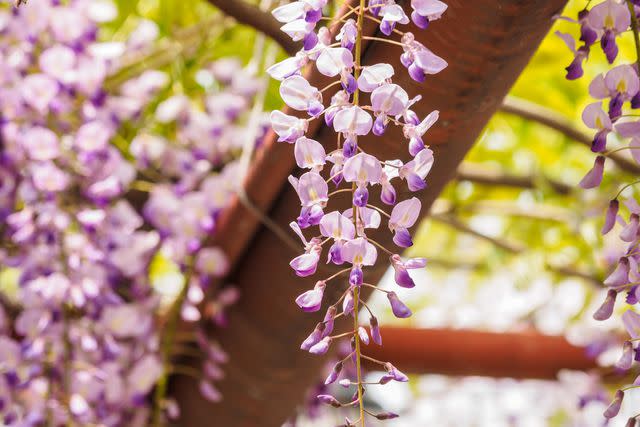
yanjf / GETTY IMAGES
Cold-hardy Wisteria macrostachya 'Betty Mathews' blooms abundantly on long, drooping racemes covered with dark lavender flowers that fade to a pretty pale lavender. This flowering vine takes a season or two to get started, but grows quickly and heartily thereafter, McEnerney says.
Zones: 4 to 8
Size: 15 to 20 feet tall x 15 to 20 feet wide
Growing conditions: full sun to partial shade; moist, well-draining soil
Growing location: Plant this hefty, woody vine along an arbor, pergola, or other sturdy structure
Related: How to Grow and Care for Wisteria

